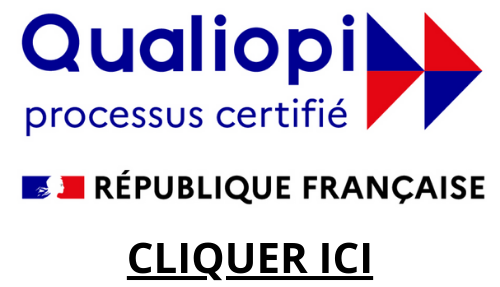The third stage focuses on the current outstanding payable for the business. It takes into account the amount of money that the company owes its current suppliers for the inventory and goods it purchased, and it represents the time span in which the company must pay off those obligations. This figure is calculated by using the days payable outstanding (DPO), which considers accounts payable.
The more days a company has of working capital, the more time it takes to convert that working capital into sales. The higher the days working capital number the less efficient a company is. A company can also sell products on credit, which results in accounts receivable (AR). Therefore, cash isn’t a factor until the company pays the accounts payable and collects the accounts receivable. Boosting sales of inventory for profit is the primary way for a business to make more earnings.
- A high number of days working capital suggest that the company takes more time to convert its working capital into sales and is subsequently less efficient.
- A lower DWC signifies that a company is taking fewer days to turn its working capital into revenues, indicating efficient cash management, better inventory management, and faster collection of accounts receivable.
- However, CCC does not apply to companies that don’t have needs for inventory management.
- Working capital can affect a company’s longer-term investment effectiveness and its financial strength in covering short-term liabilities.
- An increased level of sales, all other things equal, produces a lower number of days working capital because the company is converting working capital to more sales at a faster rate.
- The company’s world-class supply-chain management system ensured that DSO stayed low.
The basic formula for calculating days working capital requires identifying the average working capital and multiplying that figure by 365, the number of days in the calendar year. The final total of this calculation yields a daily total that can be compared to the amount of total short-term obligations. If the company can cover those obligations in just a few days, then the days working capital is said to be excellent.
What is a Negative Working Capital Cycle?
That way, you could have business receivables coming in before business expenses are going out. As we saw in the retailer example above, it is possible to have a negative cycle if you’re able to collect money faster than the time you require to pay your bills. To calculate Working Capital Cycle, add the number of inventory days to your receivable days, then subtract the number of payable days. A situation where the company’s current liabilities are more than its current assets. A situation where the company’s current assets are more than its current liabilities. The amount of a company’s working capital changes over time as a result of different operational situations.
- Doing this will allow you more time to receive the cash you need to repay your debts.
- Another solution may be to propose a discount – this can help you get around significant gaps in your cash flow.
- If your WCR is zero, your company has enough operational resources available to cover all requirements.
- The number of days in the corresponding period is taken as 365 for a year and 90 for a quarter.
- Adam Hayes, Ph.D., CFA, is a financial writer with 15+ years Wall Street experience as a derivatives trader.
A working capital cycle can be long and short depending upon the time taken to convert into cash. Another solution may be to propose a discount – this can help you get around significant gaps in your cash flow. Alternatively, if an invoice deadline has passed, you can forward the invoice to an online collection platform. This is a way of simplifying and speeding up the recovery of your client’s debts while keeping the situation amicable.
Days Working Capital, also known as Days Sales of Working Capital, is a financial metric that measures how many days it takes for a company to convert its working capital into revenue. Essentially, it’s an indicator of the firm’s operational efficiency by gauging the time taken to convert inventories and accounts receivable into cash while paying off accounts payable. A lower number usually signifies better financial management and liquidity, while a higher number may indicate potential cash flow problems or inefficiencies. It’s a commonly used measurement to gauge the short-term health of an organization. Negative working capital is common in some industries, such as grocery retail and the restaurant business.
Operating Items vs. Working Capital on the Cash Flow Statement
The number of days in the corresponding period is taken as 365 for a year and 90 for a quarter. If you choose to take control of your WCR by focussing on supplier payment periods, you are essentially extending these by negotiating with your supplier. Doing this will allow you more time to receive the cash you need to repay your debts. It’s best to try your luck with your longer-time partners first, though, because they will be more likely to give you the extra time that you need. Although payment may be earned and specified at a given moment in time, you often have to wait a while before it is settled.
It is those debts and obligation that you have to pay within one year or one business year. Current liabilities include short term expenses, income taxes, interest payable, payroll due, rentals. If you want to learn more, discover free of charge and obligation how Agicap’s cash flow management software can help you efficiently track your company’s financial situation in real time. A good business would always try to shorten the days working capital as much as it could in order to improve its liquidity position in the short term and also increase its efficiency.
This will help you to maintain a good relationship with the creditors and suppliers. Working capital is a measure of how well a company is able to manage its short-term financial obligations. Tesla’s balance sheet also does not capture some of the intangible aspects of its business, such as its brand value, customer loyalty, innovation, and social impact.
How do you get a handle on your working capital requirement?
This extends the amount of time cash is tied up and adds a layer of uncertainty and risk around collection. In other words, there are 63 days between when cash was invested in the process and when cash was returned to the company. Conceptually, the operating cycle is the number of days that it takes between when a company initially puts up cash to get (or make) stuff and getting the cash back out after you sold the stuff. To deal with this potential problem, companies often arrange to have financing provided by a bank or other financial institution. Banks will often lend money against inventory and will also finance accounts receivable.
The quick ratio excludes inventory, which can be more difficult to turn into cash on a short-term basis. A company with a ratio of less than 1 is considered risky by investors and creditors since it demonstrates that the company may not be able to cover its debts, if needed. You can calculate the current ratio by taking current assets and dividing that figure by current liabilities. Generally, the higher the ratio, the better an indicator of a company’s ability to pay short-term liabilities. However, this can be confusing since not all current assets and liabilities are tied to operations. To calculate working capital, subtract a company’s current liabilities from its current assets.
Ways to Increase Working Capital
With a working capital deficit, a company may have to borrow additional funds from a bank or turn to investment bankers to raise more money. Other examples include current assets of discontinued operations and interest payable. The difference between current assets and current liabilities represents the company’s short-term cash surplus or shortfall. A positive working capital balance means current assets cover current liabilities.
Additional Resources
Alternatively, retail companies that interact with thousands of customers a day can often raise short-term funds much faster and require lower working capital requirements. This type of fundamental analysis is important to the ongoing life of a business. By comparing the days working capital of one period to that of previous periods, it is possible to identify negative trends that could create serious issues at a later date. As a result, the business remains fundamentally sound and can continue operations as long as the ratio remains within an acceptable level. Inventory management, sales realization, and payables are the three key ingredients of business. If any of these goes for a toss—say, inventory mismanagement, sales constraints, or payables increasing in number, value, or frequency—then the business is set to suffer.
Working Capital Presentation on Cash Flow Statement (CFS)
Current assets listed include cash, accounts receivable, inventory, and other assets that are expected to be liquidated or turned into cash in less than one year. Current liabilities include accounts payable, wages, taxes payable, and the current portion of long-term debt that’s due within one year. In financial modeling and valuation, one of the key sets of assumptions that are made https://1investing.in/ about a company is in regard to its accounts receivable days, inventory days, and accounts payable days. In general, a high working capital cycle is not considered to be good because it indicates that a company is taking longer to convert its investments into cash. In conclusion, working capital management is a crucial aspect of any business, regardless of its size or industry.
Supplies Ltd buys furniture from Maker Ltd which they expect to sell in six weeks’ time (Inventory Days). They have 60 days to pay their supplier Maker Ltd (Payable Days), and when a sale is made, payment arrives into their account in three days (Receivable Days). This means Maker Ltd will be out of pocket for an average of 64 days between paying its supplier, producing and shipping the product, and receiving cash into its bank account from customers. Negative working capital cycle occurs when a company collects money quicker than the time required to pay the expenses. It is the time to taken to convert net assets and net liabilities into cash. There are several day-to-day business activities which required readily available cash.

 Actions de formation ; actions de formation par apprentissage
Actions de formation ; actions de formation par apprentissage 